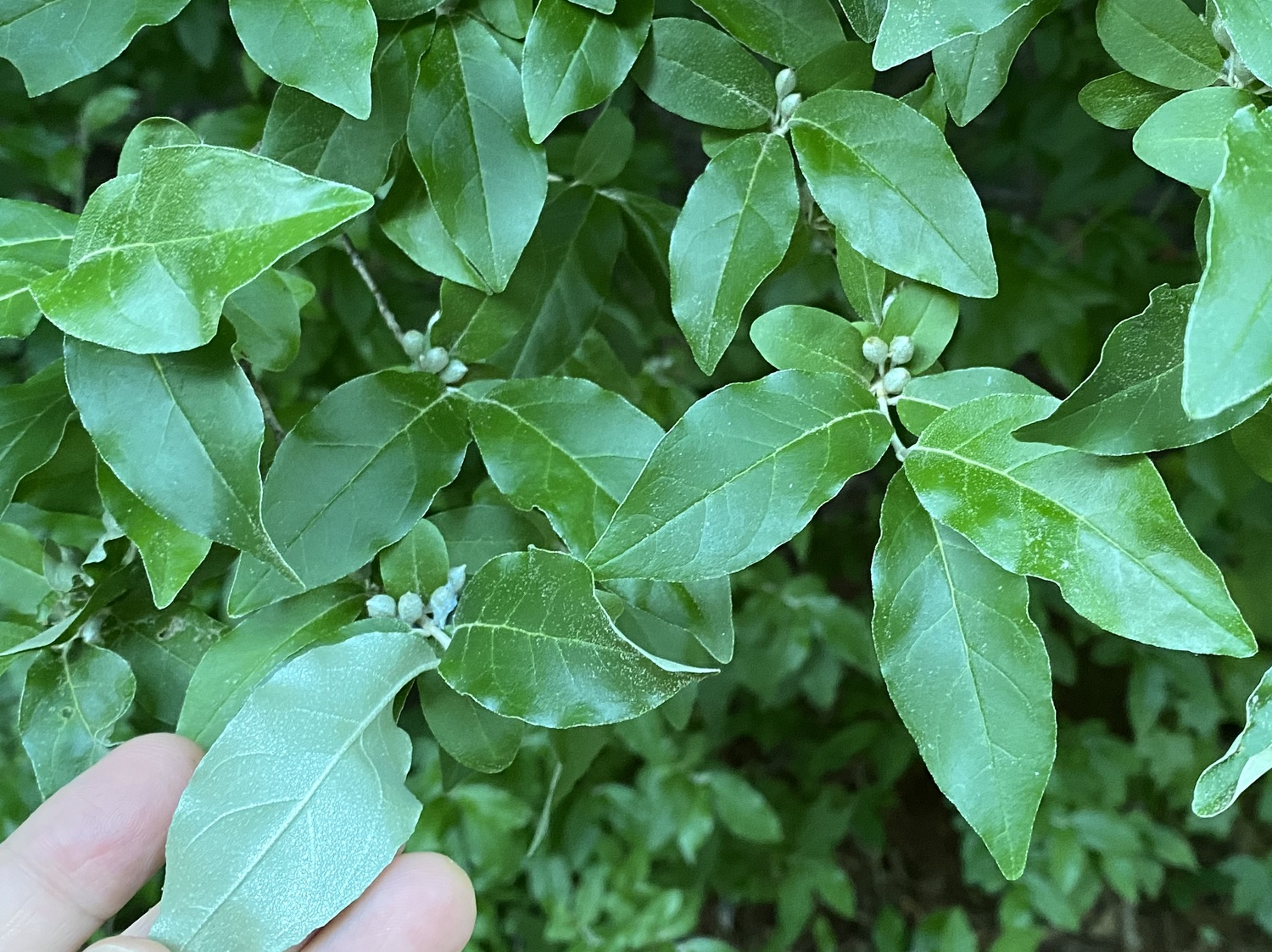TREES OF ATHENS: SHRUBS
5/28/20
We have several types of shrubs, both native and introduced. This list is likely to grow, as I am certain I have only scratched the surface of what is around.
Native
American Holly (Ilex opaca). The leaves of American Holly are dark green, stiff, waxy, and tipped with short spines. In the spring, it bears toxic green berries, which turn red by winter.
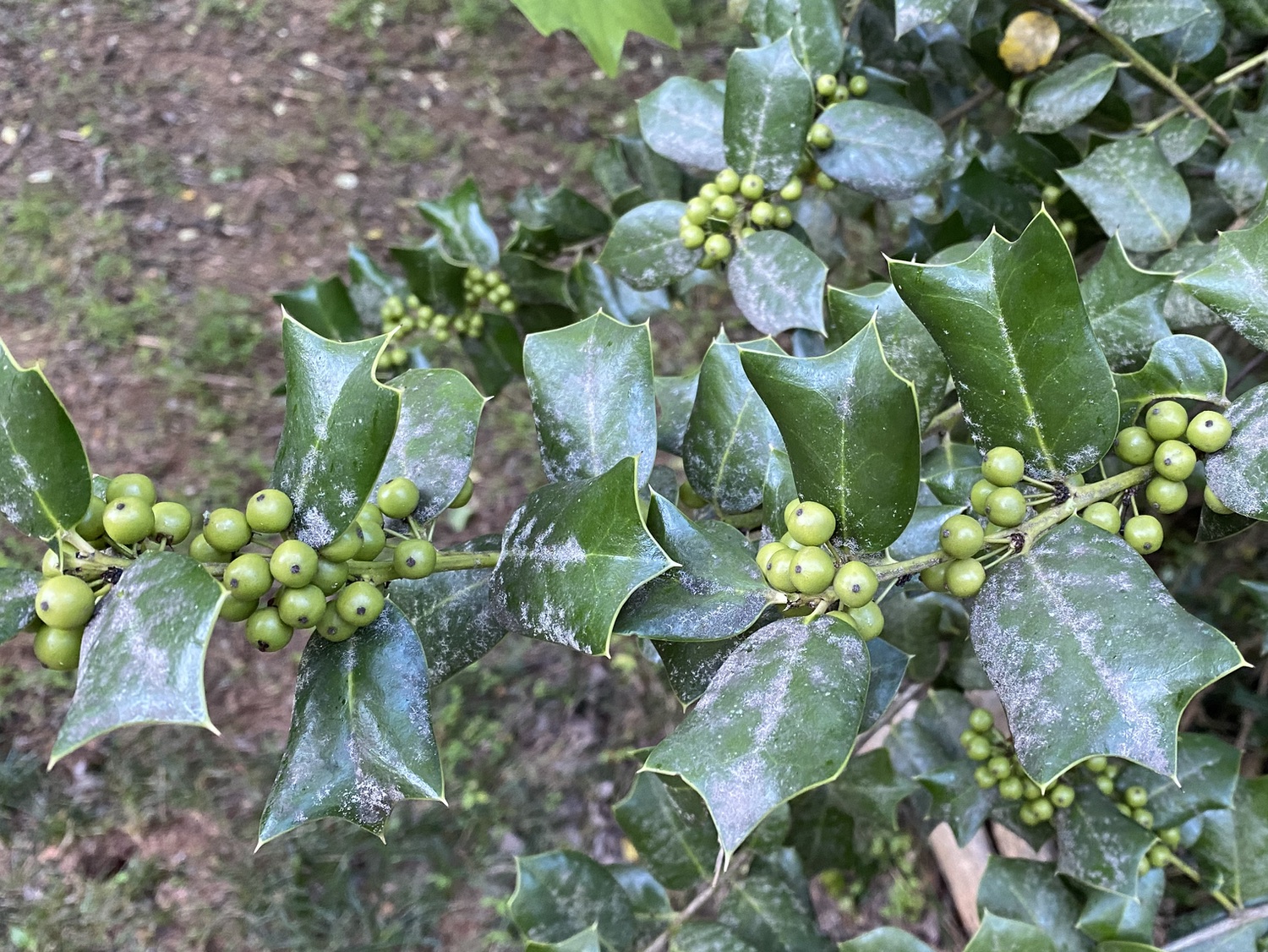
Winged Sumac (Rhus copallinum, also called Shining Sumac). Winged Sumac has glossy leaves that are distinctive with their wings on the leafstalk between the leaflets. Winged Sumac can sometimes grow into a tree up to 20' tall, with a 4" elliptical trunk. The bark is smooth with horizontal ridged lenticels.
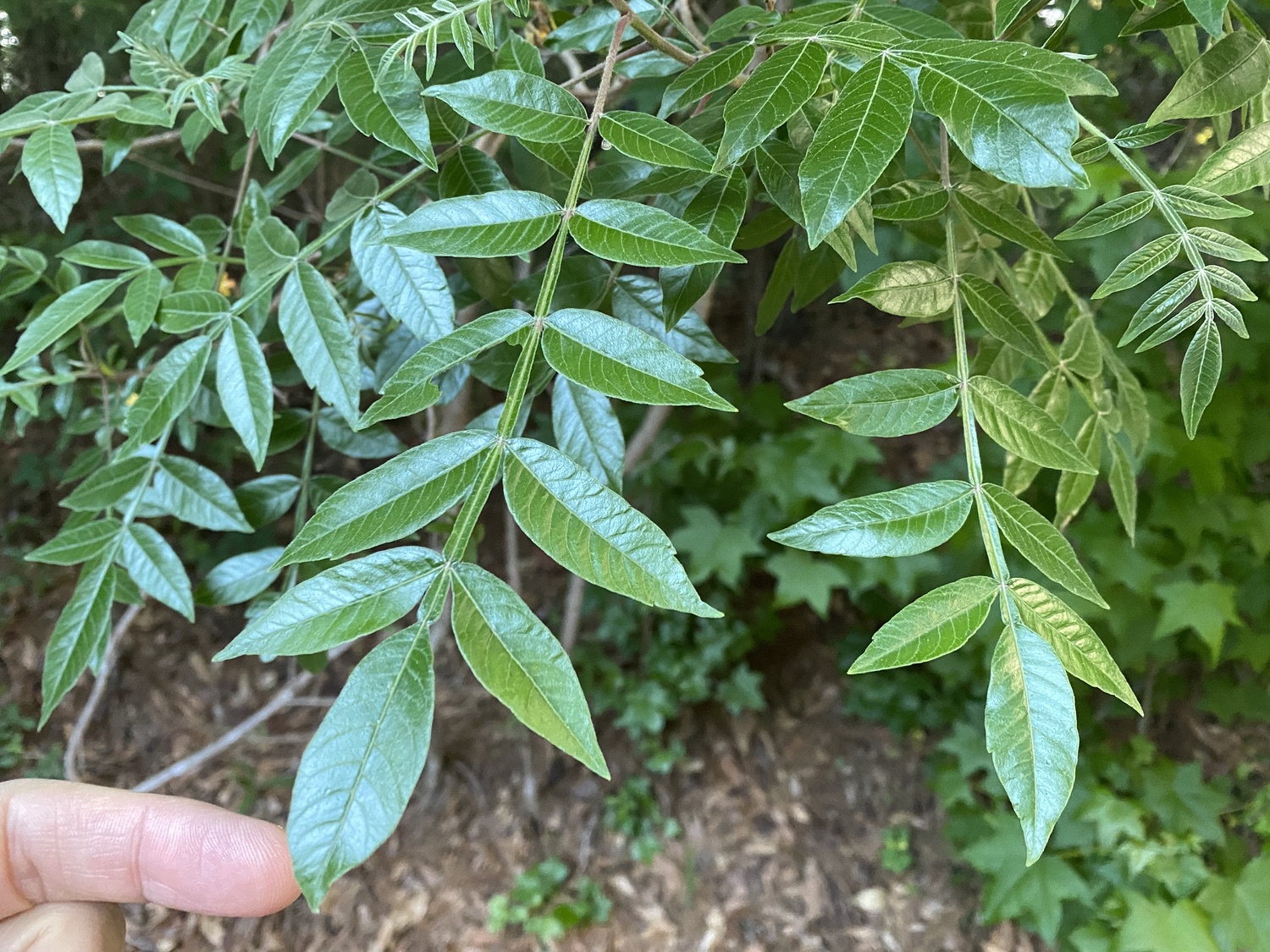
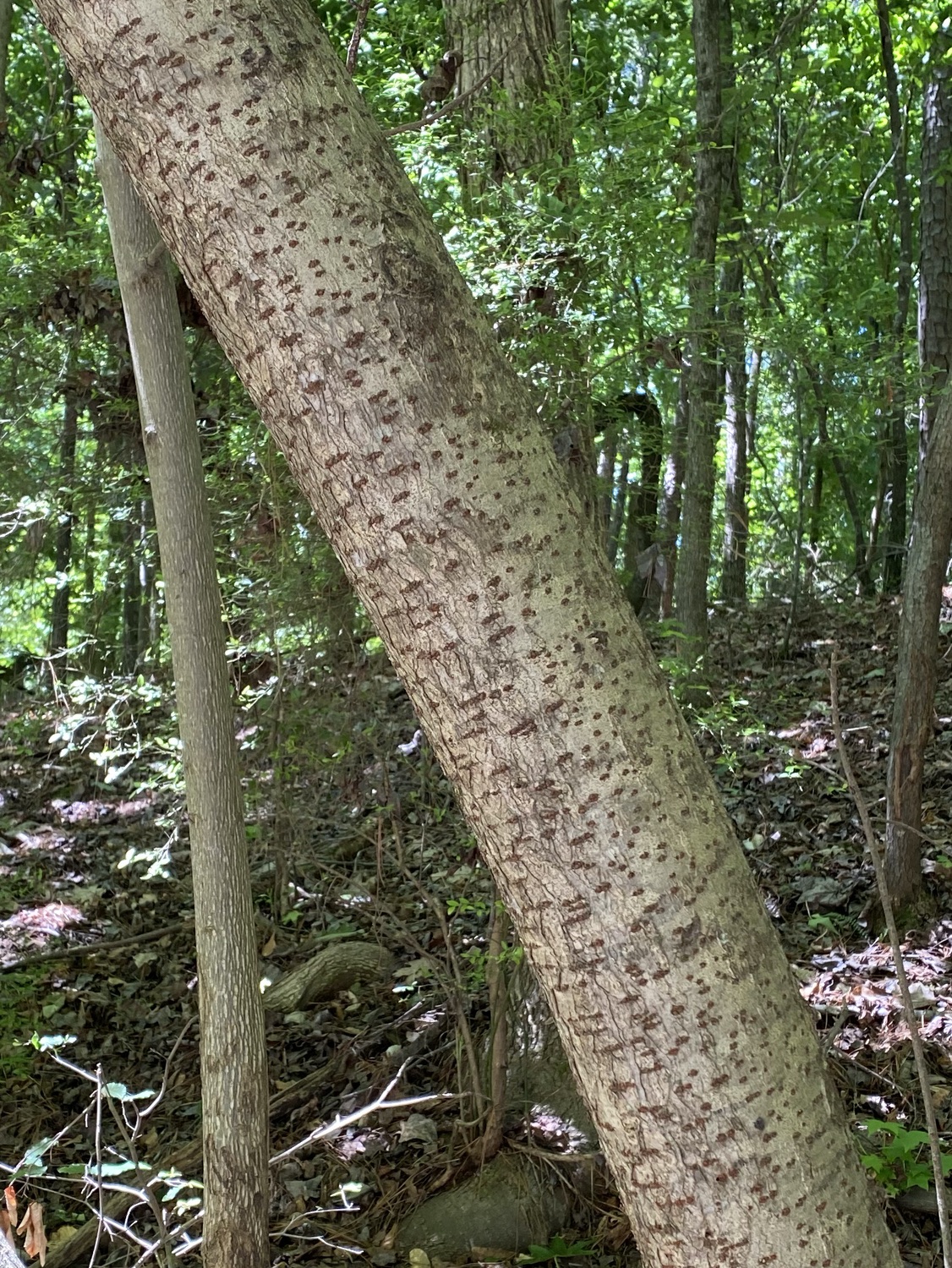
Southern Bayberry (Morella cerifera, also called Common Wax-Myrtle). The leaves are elliptical and tapering with teeth near the tip. When crushed, the leaves are fragrant and smell like bay leaves. This grows in a few places along our street, and in at least one place, they look like they were planted intentionally; in another, they seem to be volunteers. The bark is mostly smooth with small warts. These shrubs are often up to 10' tall.
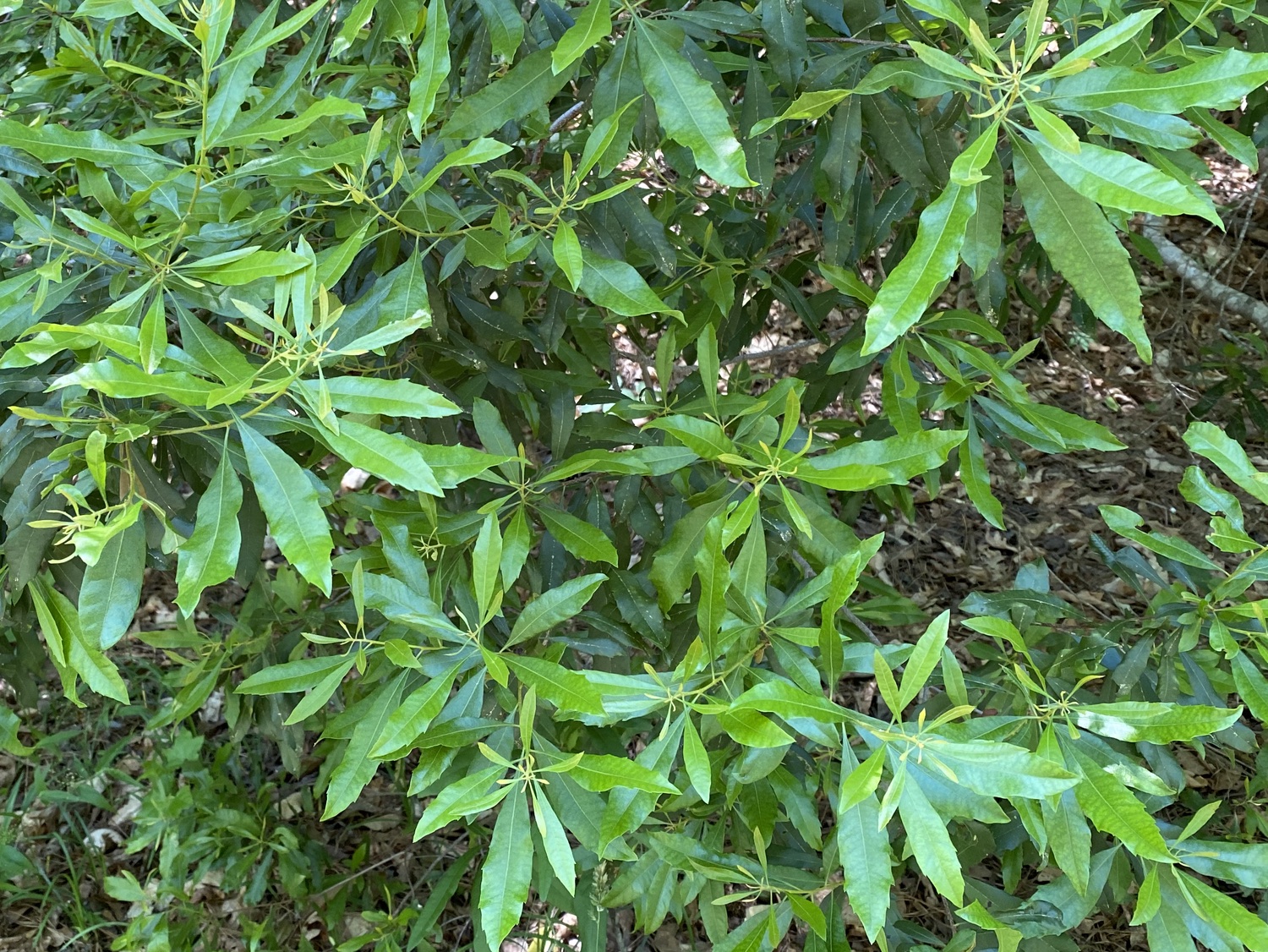
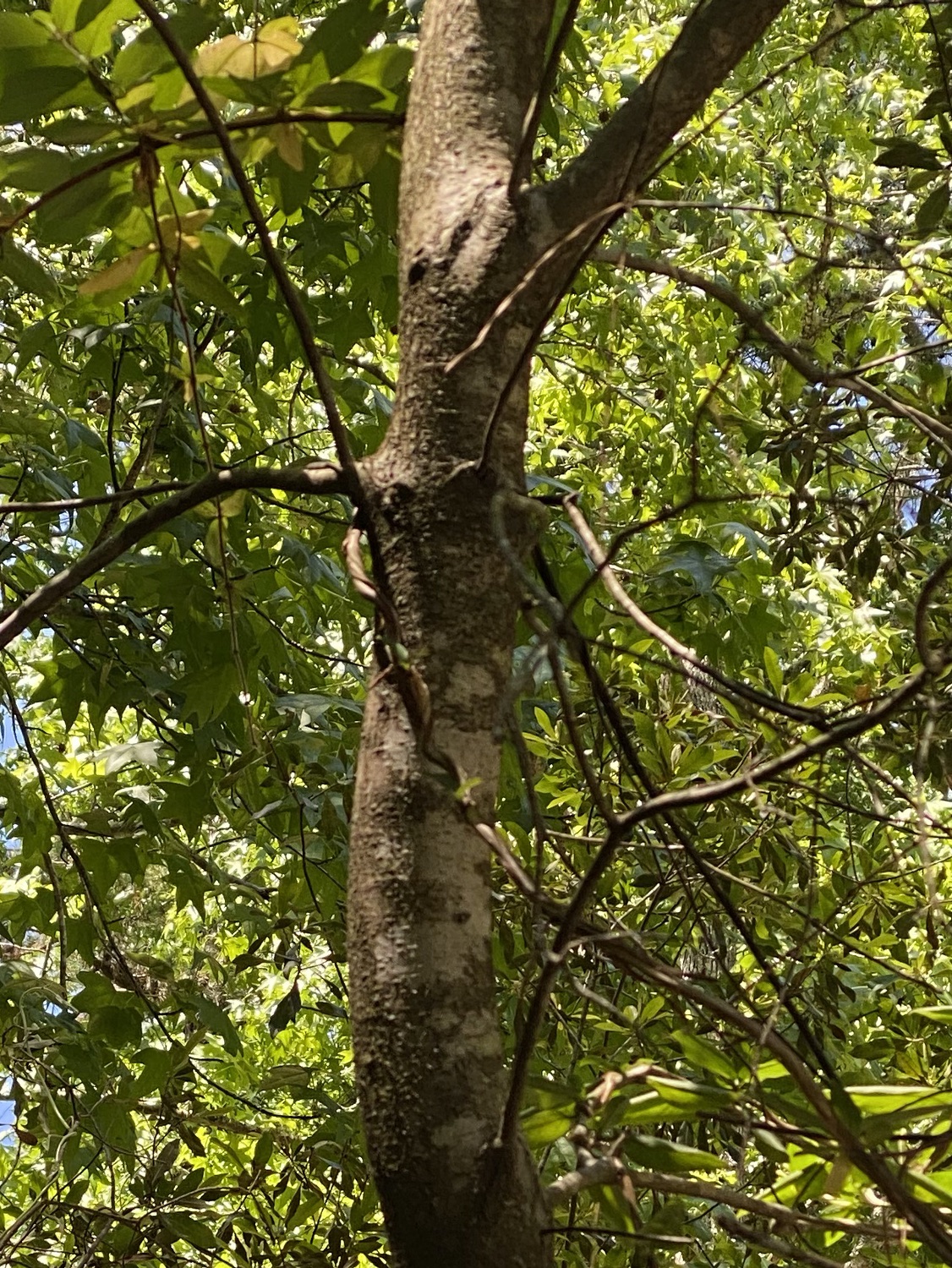
Painted Buckeye (Aesculus sylvatica, also called Georgia Buckeye). Each leaf has five to seven pointed and serrated leaflets, which radiate from a point with very short leaflet stalks. Although Painted Buckeye can grow to be a small tree, all the ones I’ve seen have been short shrubs less than 3' tall. In early June, it starts to send up long yellow stalks (lower photo) on which its flowers will grow.
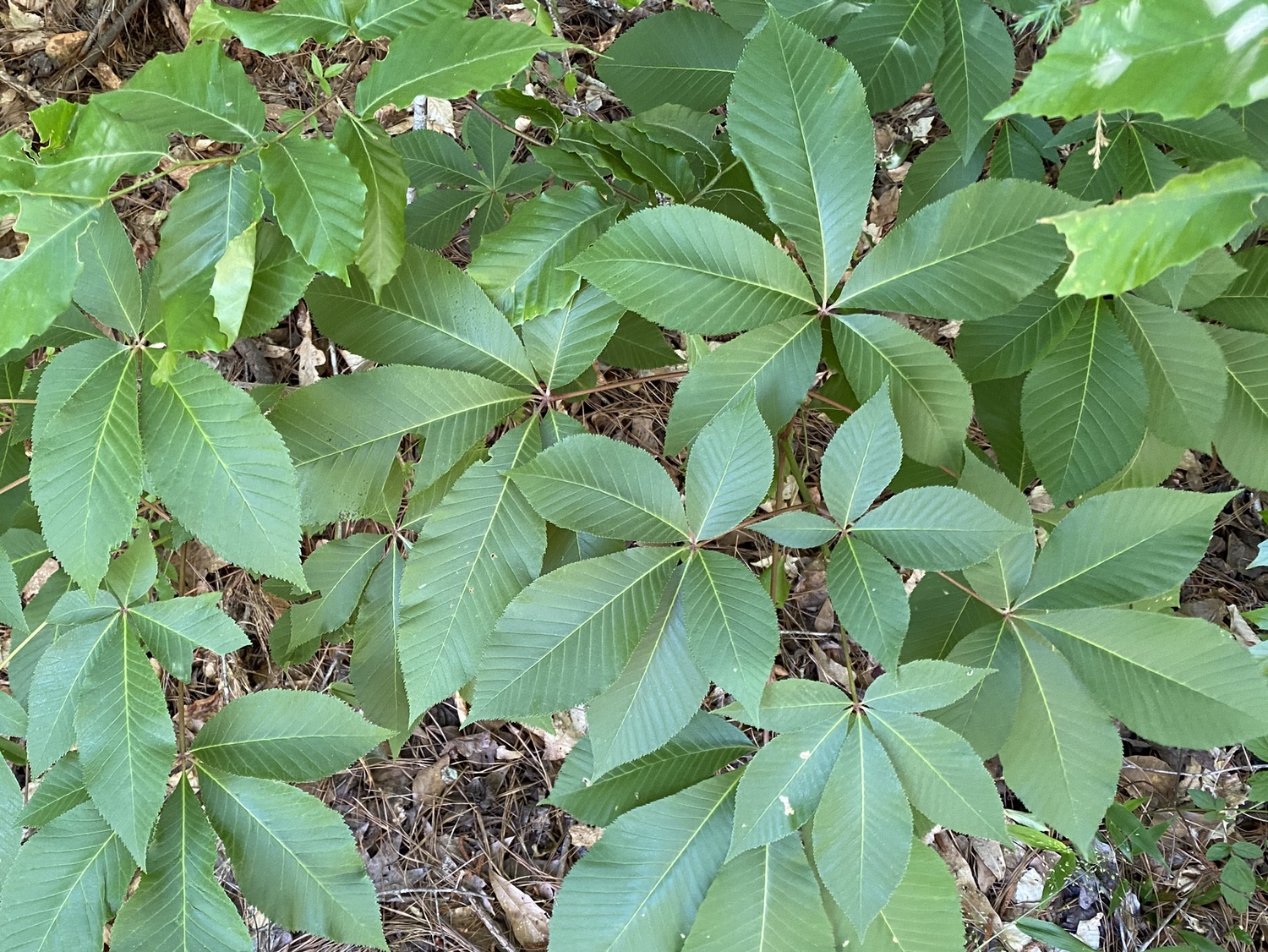
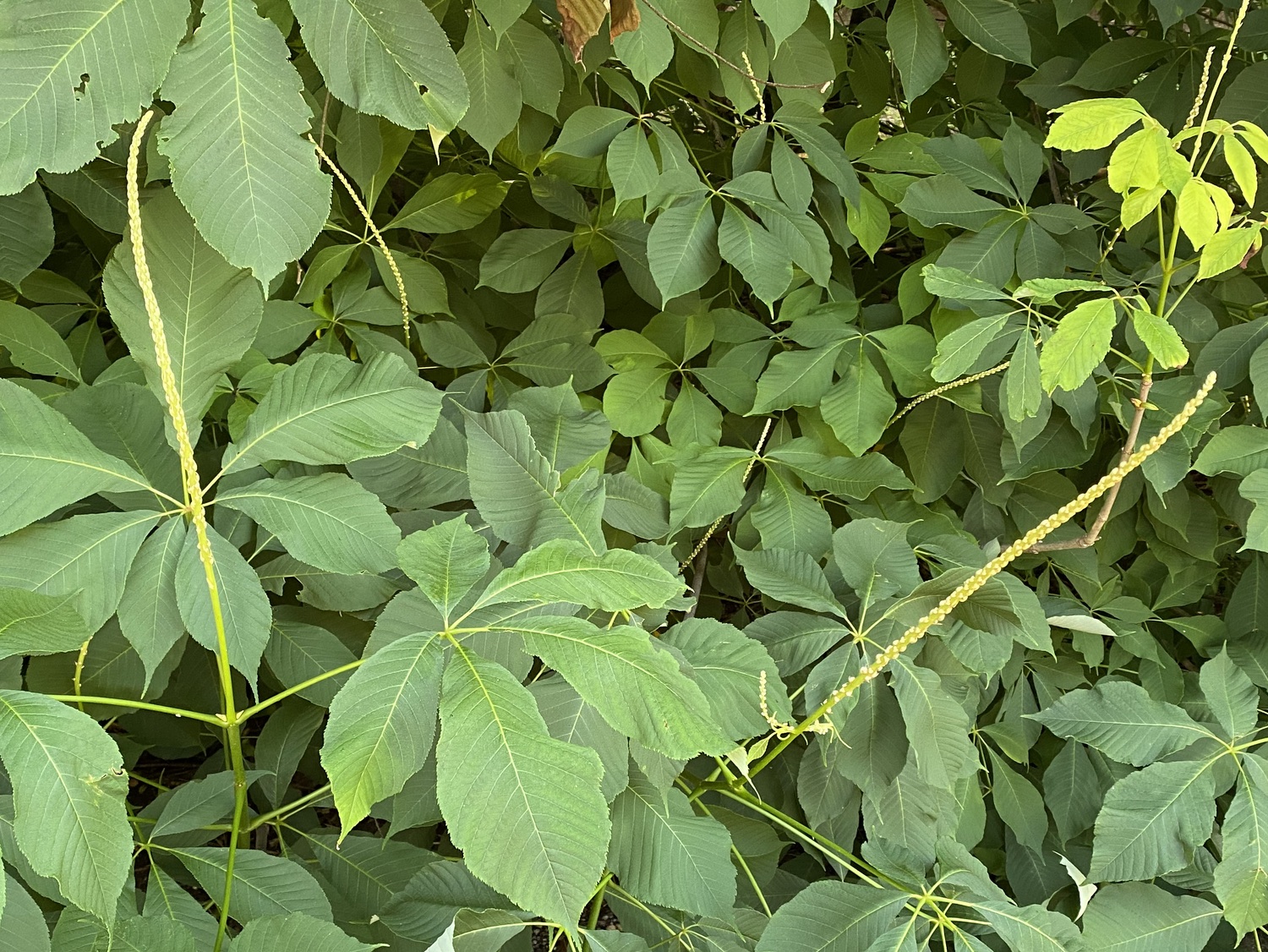
American Elderberry (Sambucus canadensis) has compound leaves with 5–9 leaflets, and each leaflet is long, tapering, and serrated. It blooms with dense clusters of small white flowers, with prominent yellow-tipped anthers. These flowers produce dark purplish berries, which are edible when cooked. American Elderberry forms 5–6" shrubs and spreads by suckering roots. It is well-liked by American Elderberry grows along the riverbanks of the North Oconee River.
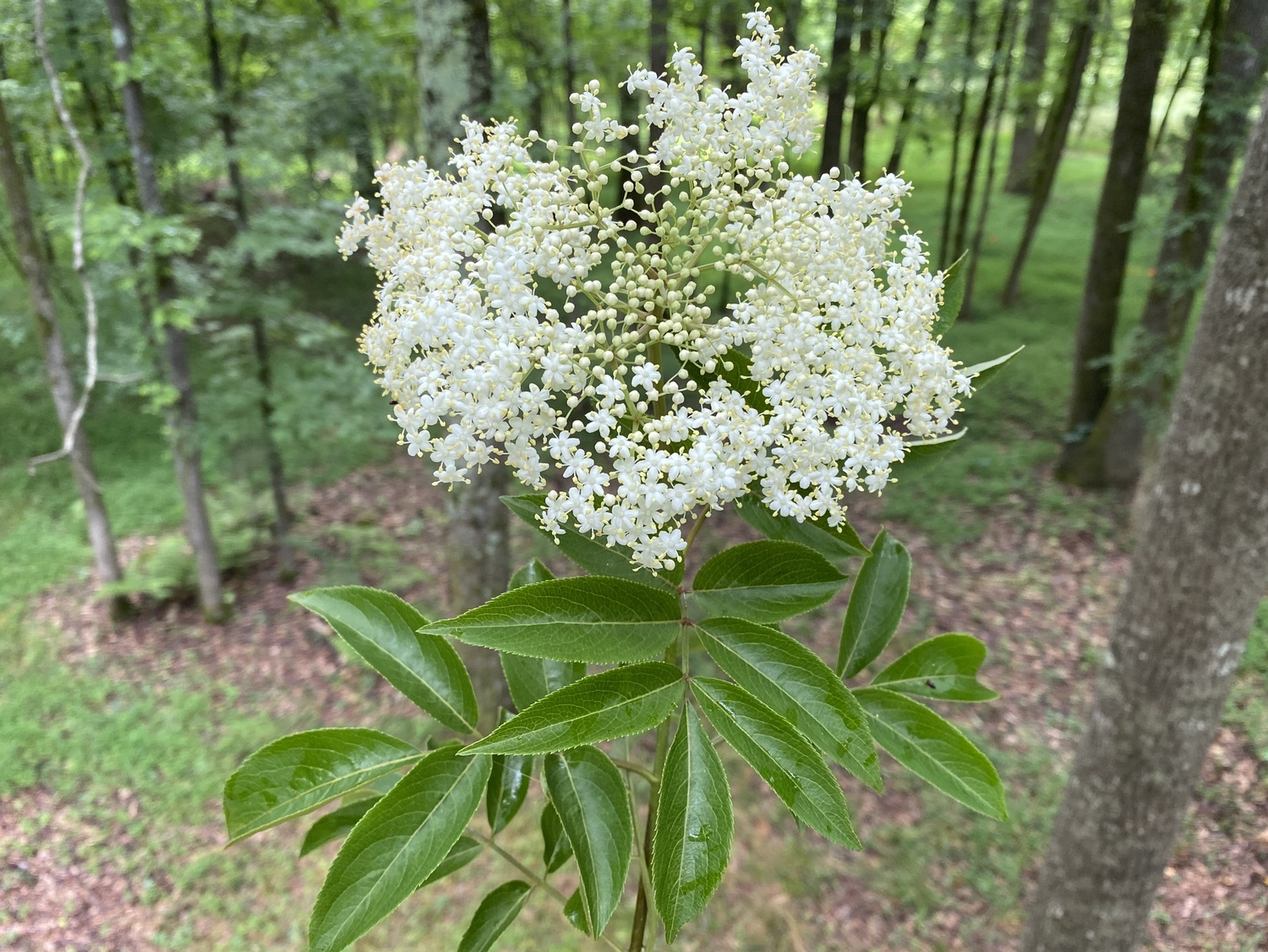
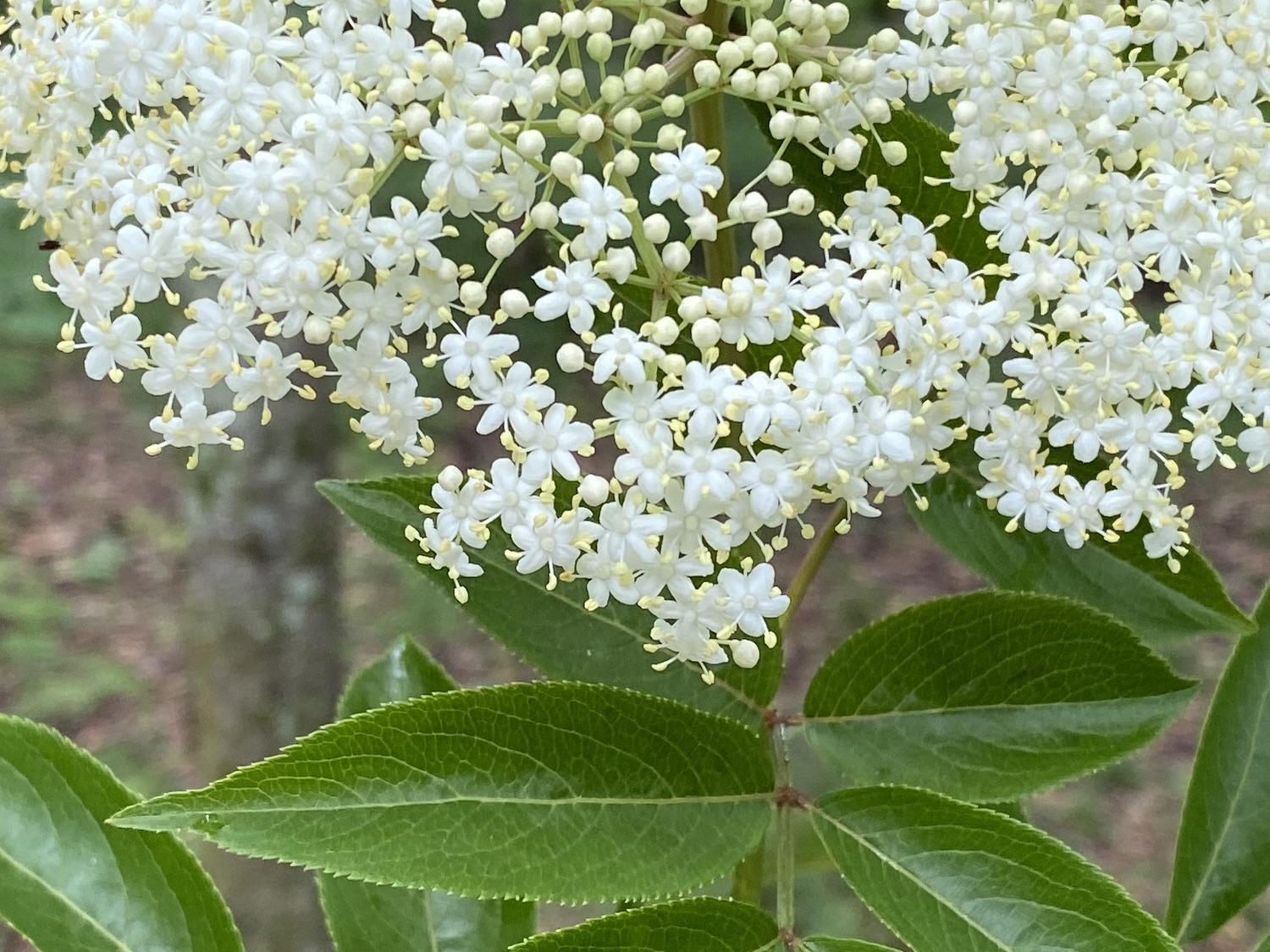
American Beautyberry (Callicarpa americana). These shrubs are typically 3–5' tall, with opposite fuzzy leaves with toothed margins. The leaves are large, about 3" wides and 6–7" long, with impressed veins. In September–October, Beautyberry gets clusters of bb-sized purple fruits. The brown bark has numerous small raised lenticels.

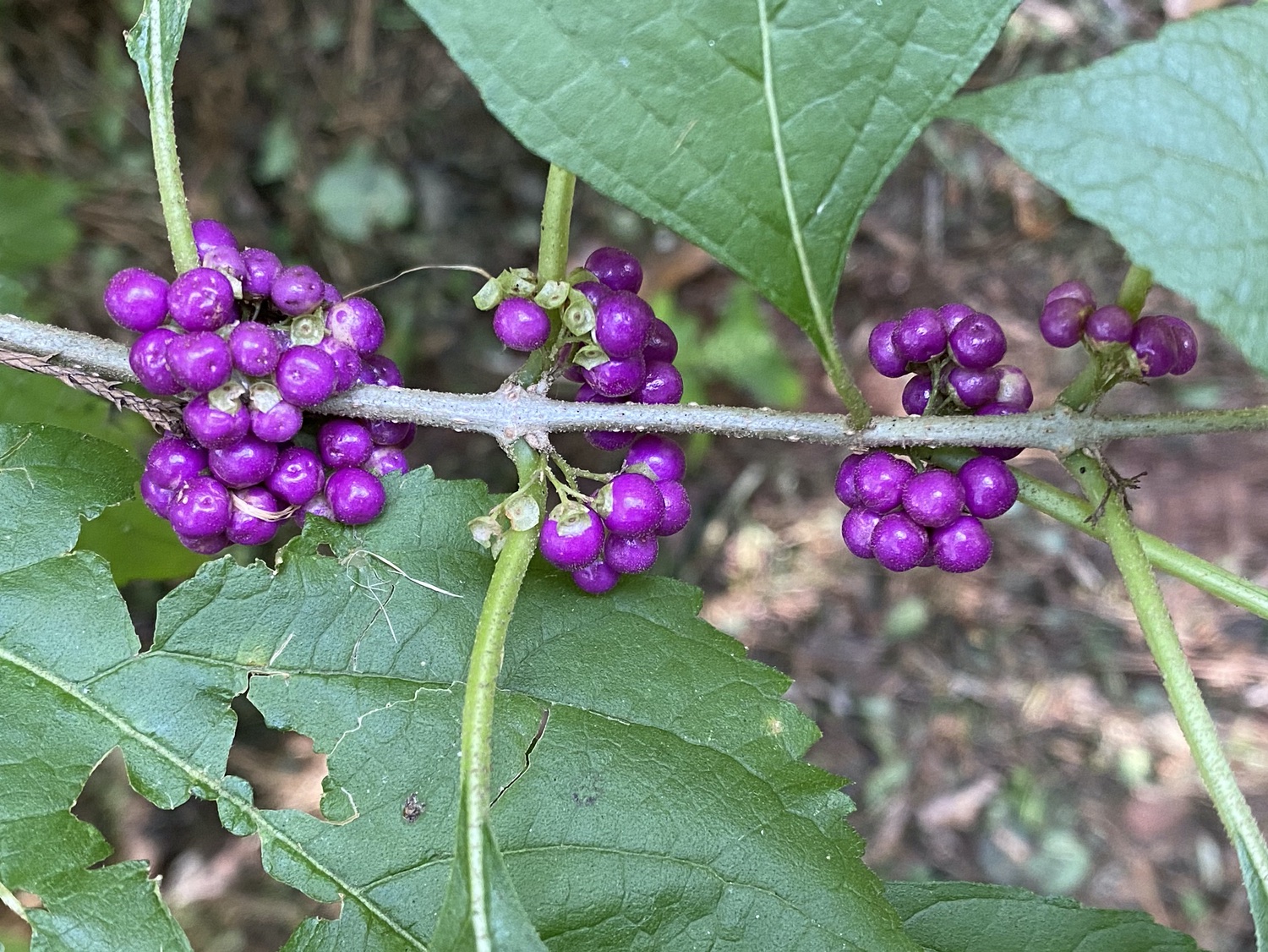
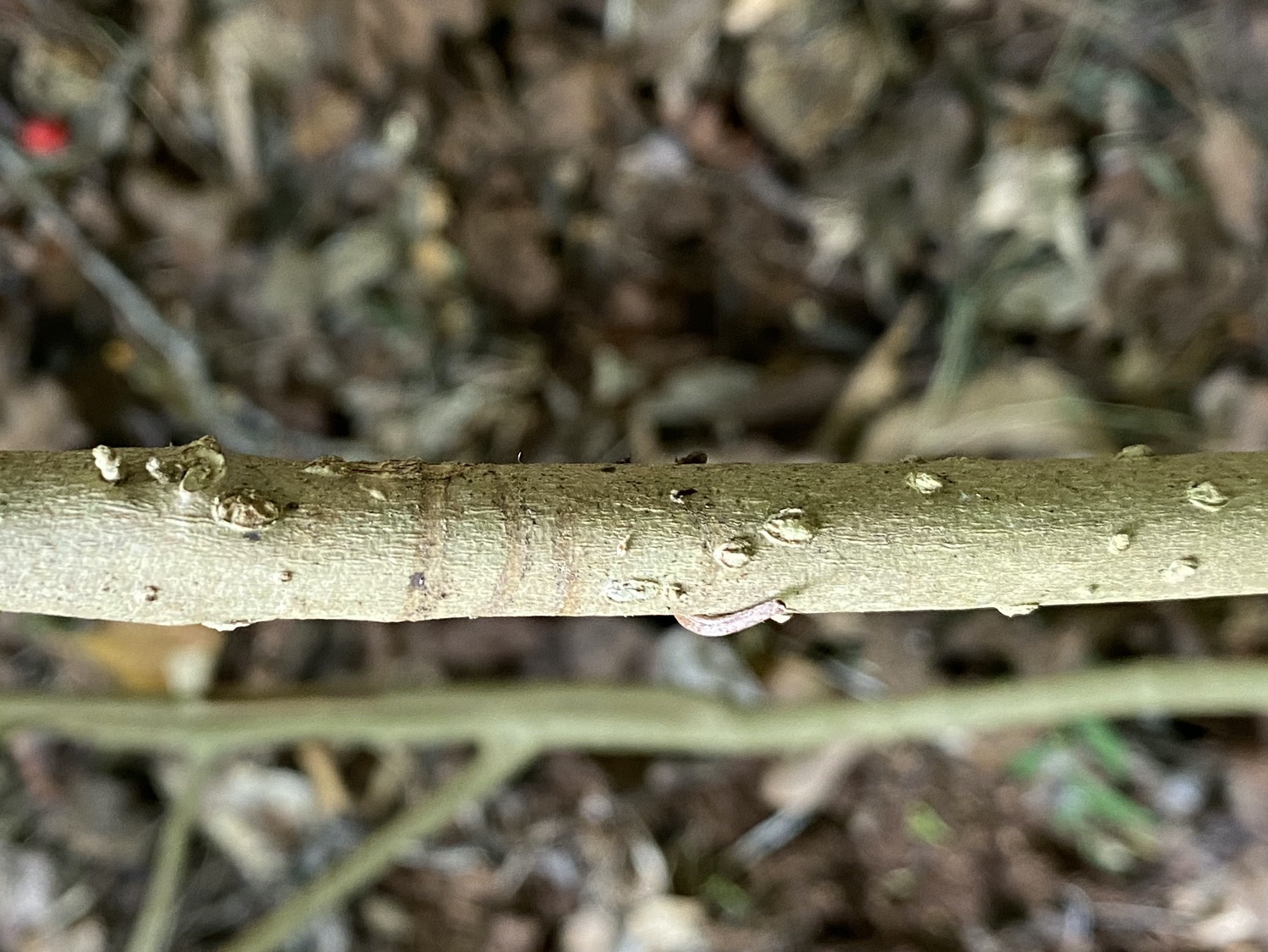
Non-native
Chinese Privet (Ligustrum sinense). Chinese Privet is often a shrub, but it can grow into a medium-sized tree. It has small elliptical leaves that are an inch or two long. They are kept through the winter, making Chinese Privet an evergreen. The new bark is very smooth, much like a beech, but the older bark is quite rough. Chinese Privet is covered in small white blooms in late April to early May. These produce to numerous small dark berries, which the birds eat and spread everywhere. These berries are toxic to humans.
This is one of the most aggressive invasive species in our neighborhood, and it tends to completely take over areas adjacent to the North Oconee River. I’ve spent many years slowly removing it from our yard, especially where it dies back. Lately, it has become obvious that very few herbs or shrubs can grow where the privet is, making me motivated to remove all of it. Even so, it is a lovely plant when it blooms.
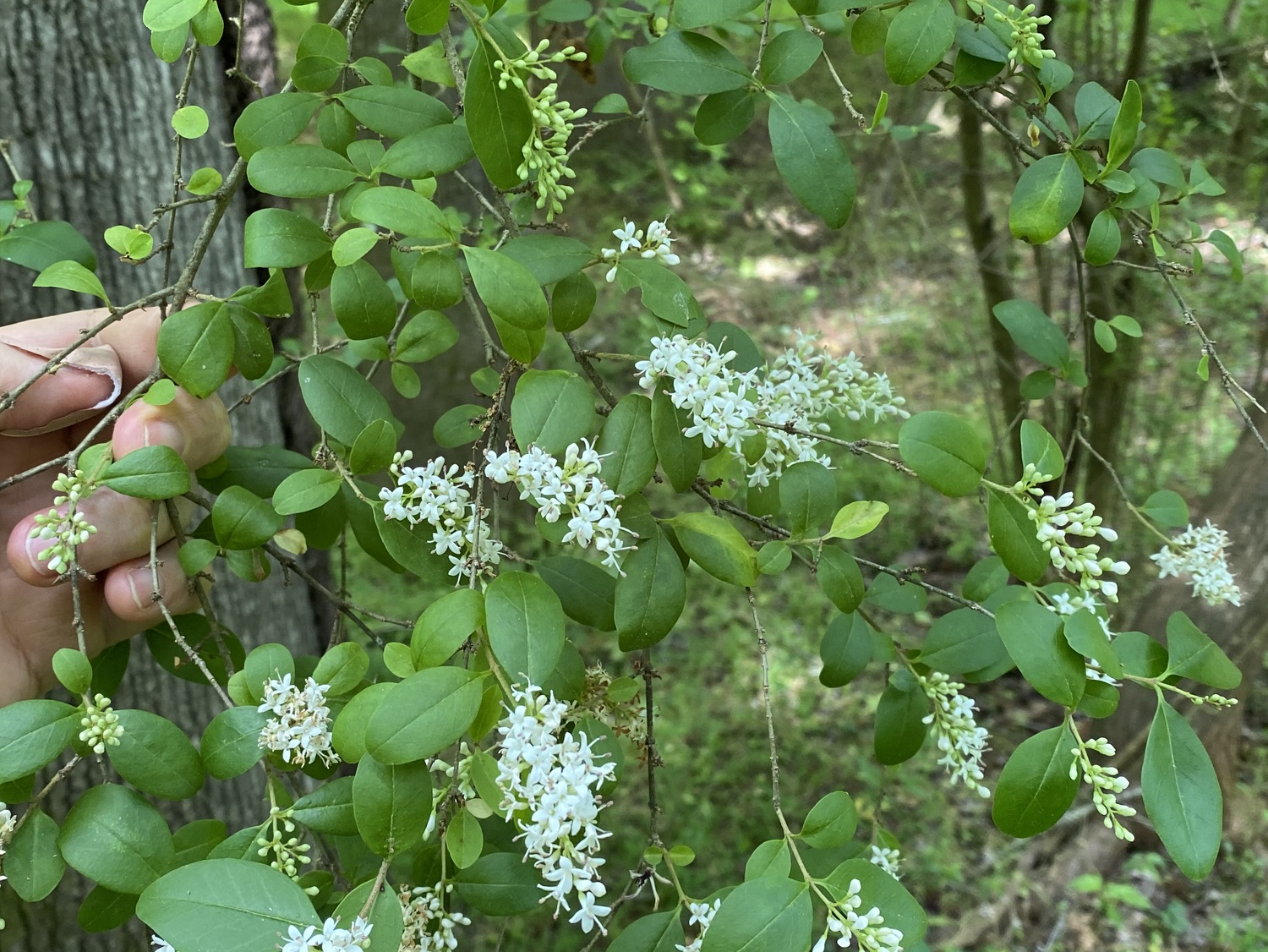
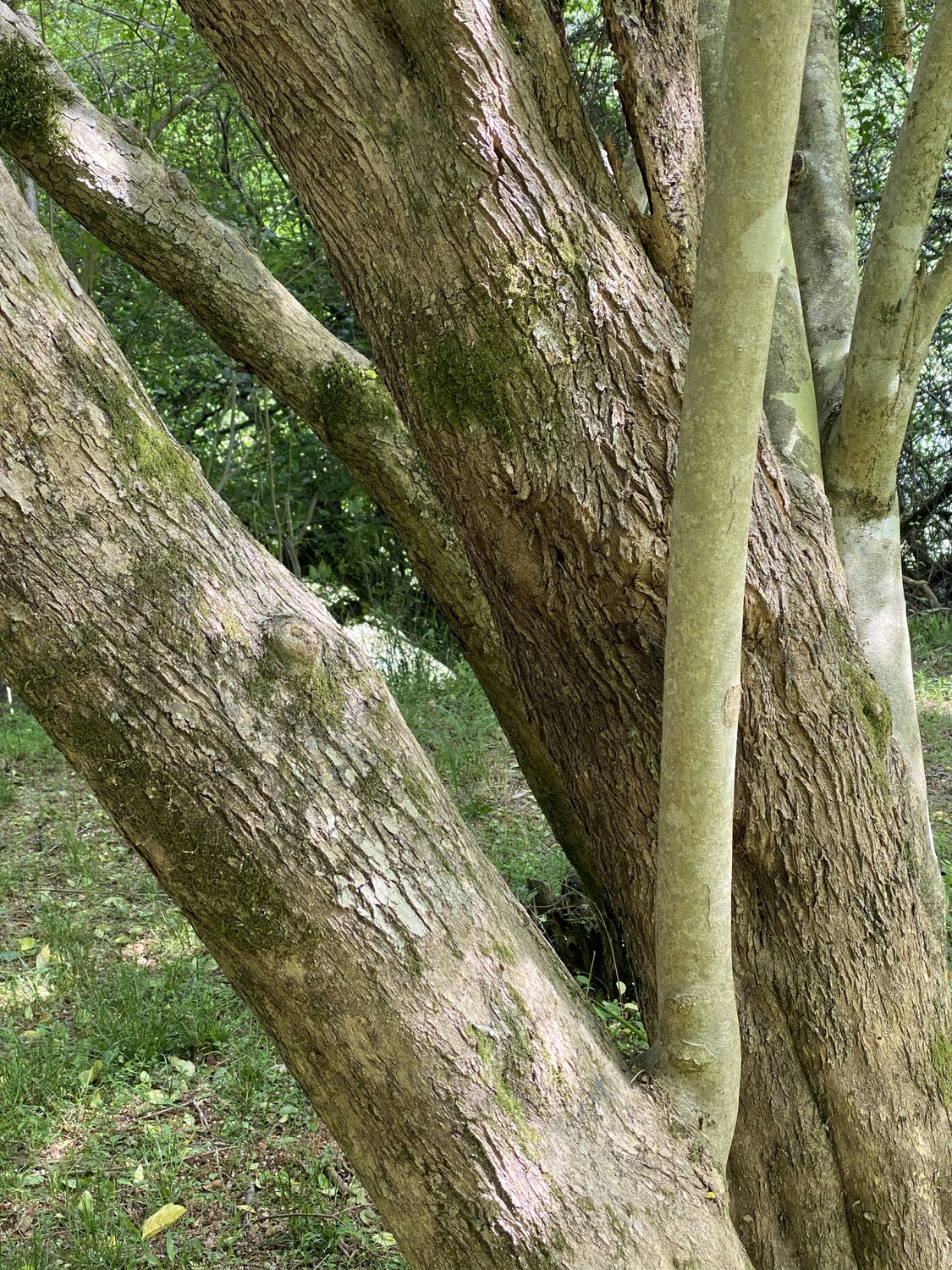
Nandina (Nandina domestica). This is a common invasive with characteristic bipinnate leaves, in which a leaf consists of several leaflets, which separate into fine leaflets. In may, Nandina gets white flowers which turn into red berries that can persist into the following year. These berries contain cyanide and other alkaloids, and they can be fatal to birds like Cedar Waxwings. As a result, there’s been an effort to remove these shrubs. Nandina is an evergreen, so this and the red berries make it an attractive plant that has often been planted by gardiners, even though it can be fatal to birds.
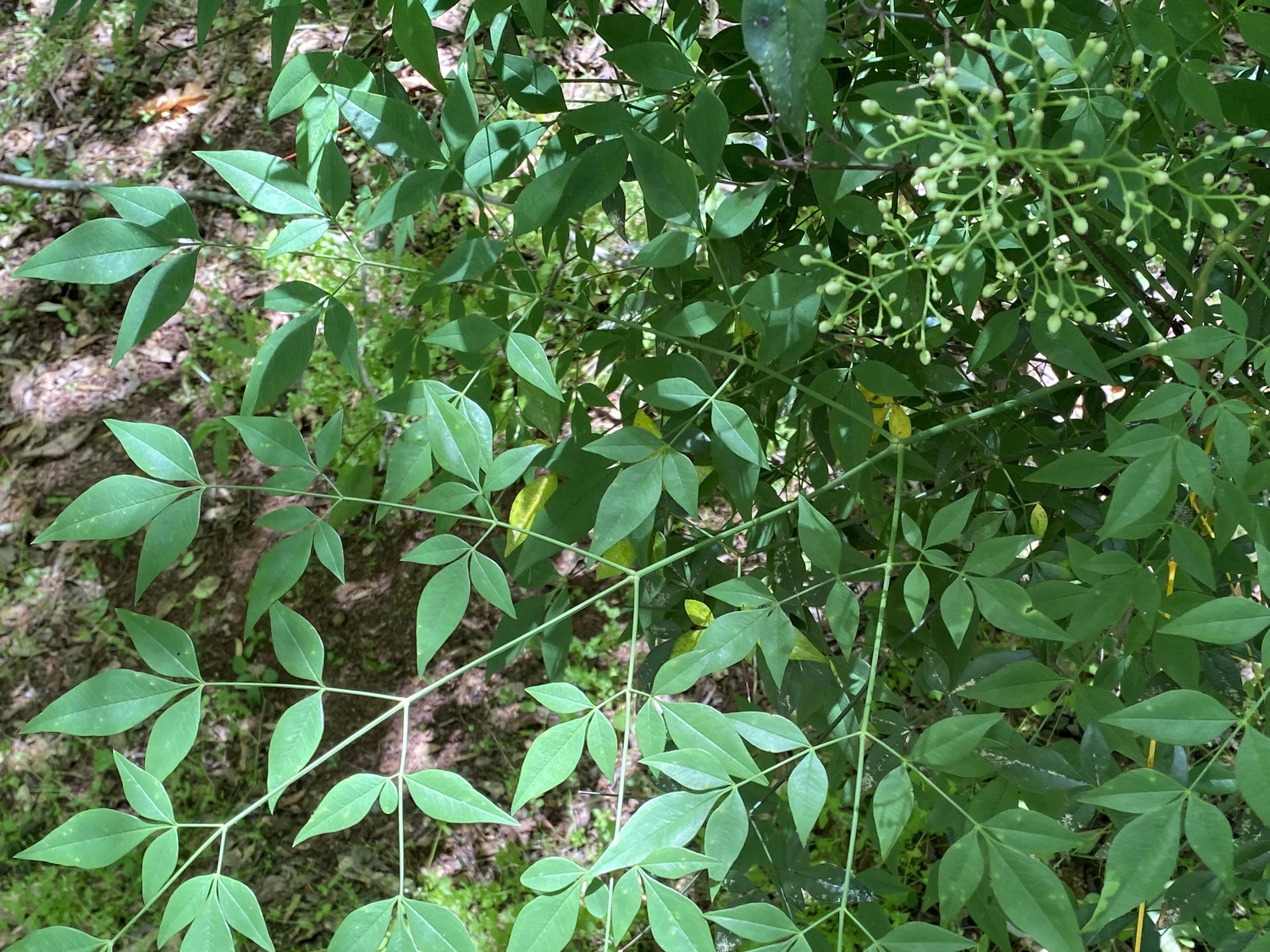
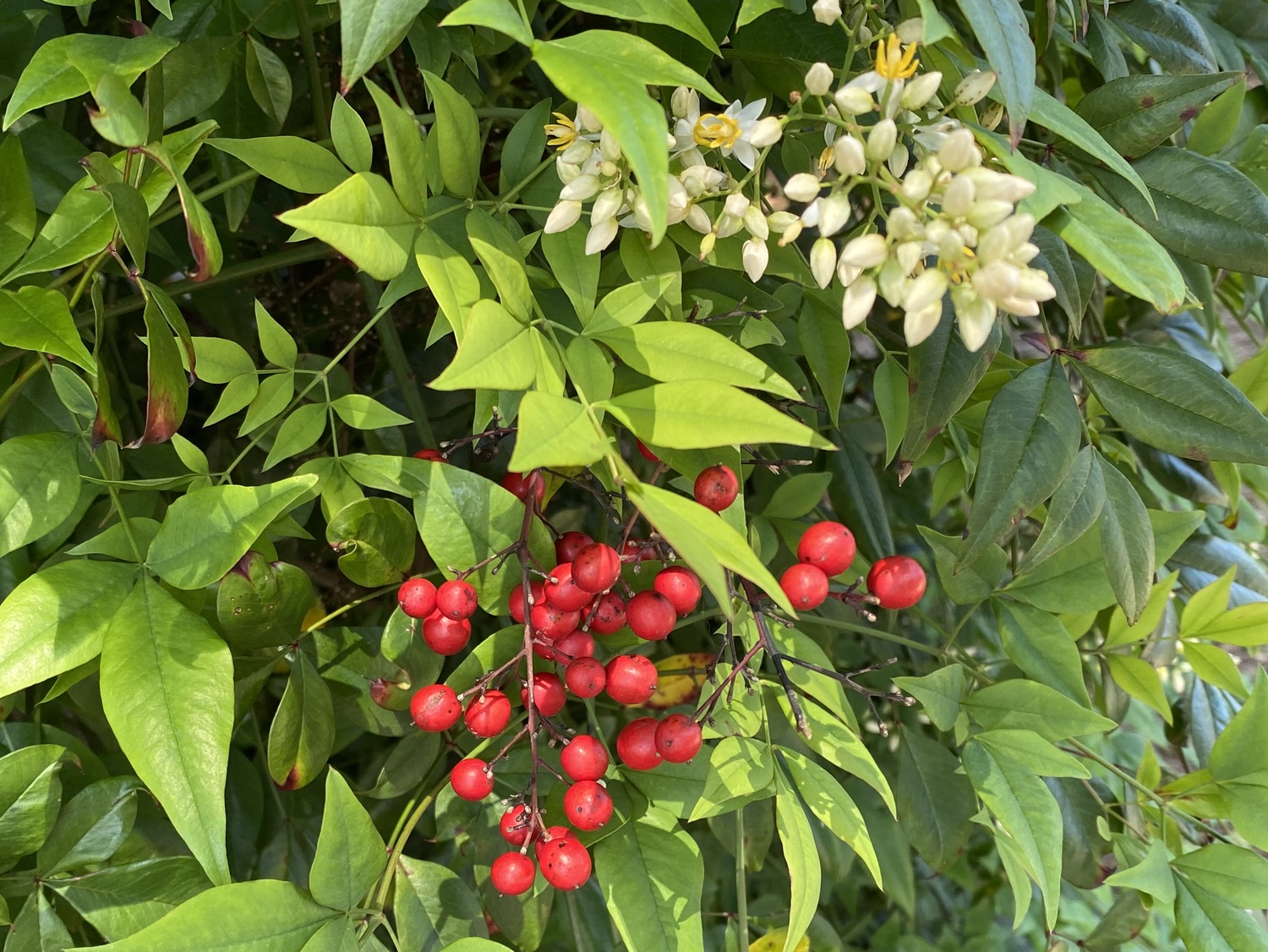
Leatherleaf Mahonia (Mahonia bealei). This is one of the newer invasives. I’ve just noticed it in our yard the past couple of years, and it seems to be popping up in numerous places. The leaves look rather similar to a holly, are quite stiff and have sharp points. The plant gets whitish-blue berries on it, which are apparently edible except in large quantities (but don’t take my word for it!). Most of the plants I’ve seen are less than 3' tall, with many radiating stems from a single point.
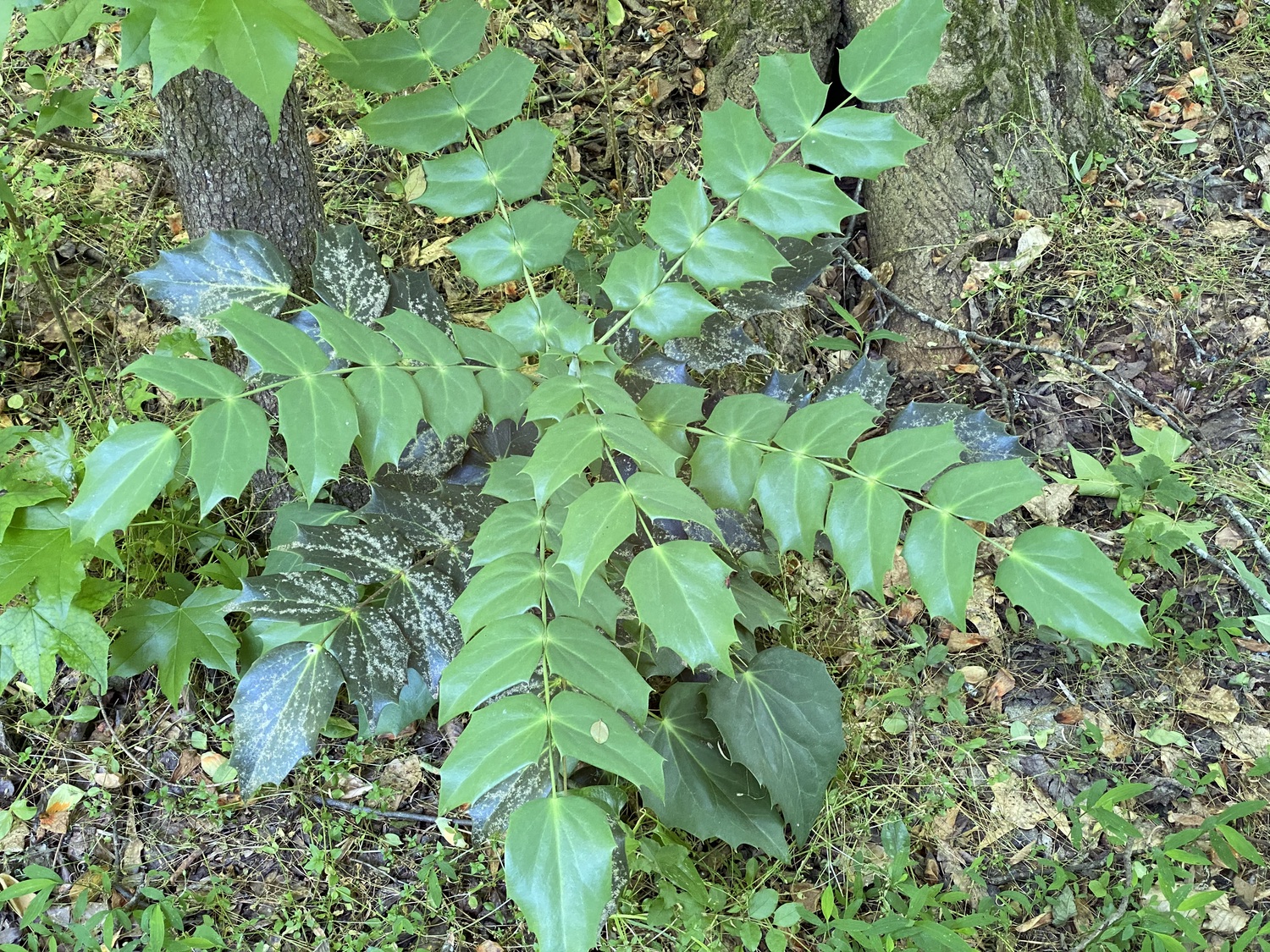
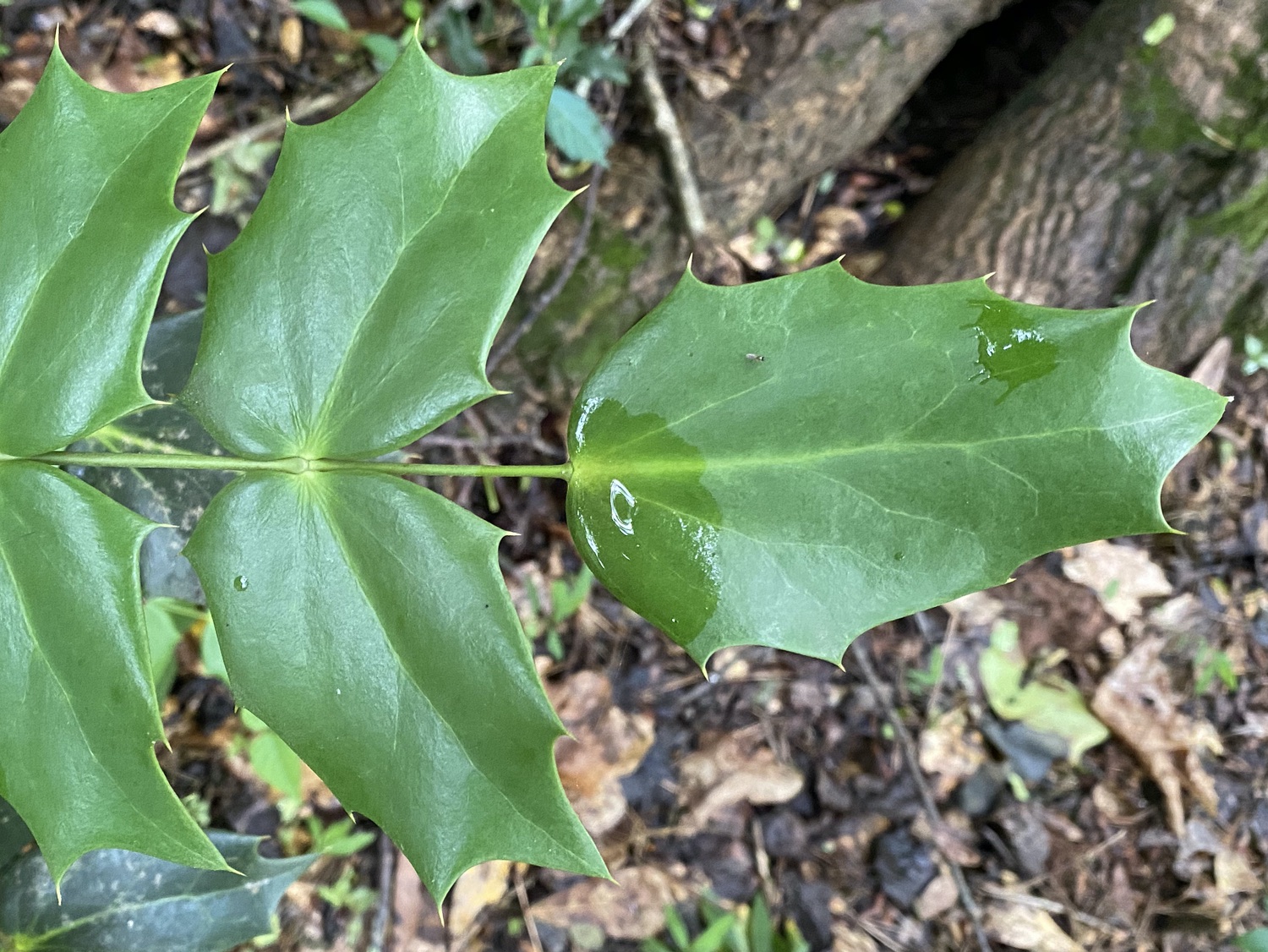
Autumn Olive (Elaeagnus umbellata). Autumn Olive is another one of our invasives. I’ve had one for years just outside of my office, but only recently learned to identify it. Its leaves are about 2" long, lanceolate (like a pointed oval), with a smooth edge and a distinctly white underside. With a 10x lens, the small round white to silvery scales that cause this color become obvious. It produces small berries in late May that are initially pale green, but eventually turn red. Some branches have thorns. The shrubs I’ve seen have many trunks and are 5‐8' tall.
